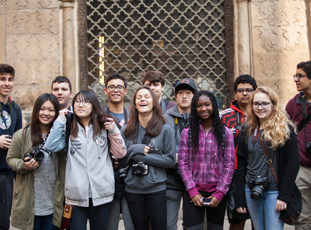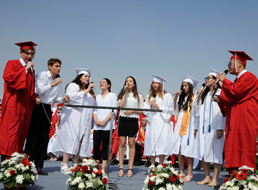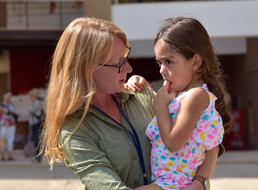







Prior to 1945, K-12 educational opportunities for American children in Egypt were limited to several Egyptian schools that admitted foreign students; other nationality schools including British, French and Greek Schools; a church-affiliated American boarding school in Alexandria; and private arrangements such as a small school for Americans conducted on a houseboat near Maadi. Following World War II, increasing numbers of American families came to live in Egypt. These U.S. citizens founded The Cairo School for American Children as a private, independent school to educate their children.
In 1955 the school took on its current name of Cairo American College and relocated to what had been the palace grounds built by Prince Mohamed Ali Ibrahim in the 1940s for members of his family at 40 Road 78, Maadi.
READ MORE .....








During this 1957-63 period, the character of the curriculum stayed directly on the path created during the earlier years. Elementary and junior high emphasis were reading, writing, and mathematics, supplemented by science, social science, music, art, and physical education courses. The high school maintained its college preparatory focus with four years of English, French, mathematics, science, and social science with electives in Latin, art, music, journalism, drama, typing, and Arabic. French was taught from the first grade through the senior year. In the mid 1960's an English as a Second Language program was added to the curriculum.
READ MORE ......






A Decade of Rapid Growth 1975-85 Just as the June 1967 war resulted in reducing, and all but freezing, the level of Americans in Egypt, the October 1973 war signaled the thawing of Egyptian-U.S. relations and the return American families to Egypt in much larger numbers than before. During the October 1973 war, few foreigners left Egypt. CAC missed only a few days of classes, although many classes were temporarily held off campus (primarily in teachers' homes) during the three weeks of the war.
During these years, total enrollment went from 343 to 1293 students. The percentage of American students grew from 44% to 63%. Egyptian students were able to enroll and their enrollment, starting from zero, grew to 7%. (It actually reached a high of 15% from 1980-82.)
READ MORE ...







Consolidation and Stability 1985-95
Other than two disruptive factors that occurred in 1986 and several small trends, the patterns of the 1985-86 academic year were a good representation of the coming era. Overall enrollment was 1292 (with 80 high school seniors) on a campus that was designed to accommodate up to 1400 students. Slow growth was expected over the next few years. From the previous year, the percentage of Egyptian students had jumped to 9%, the American student percentage had dropped slightly to 57%, and other countries accounted for 34% of enrollment. There were 136 faculty members of whom 79% were American. Enrollment trends that emerged were: an incremental rise and the leveling off of the percentage of Egyptian students; a corresponding small decrease in the percentage of students from third countries; and an overall high school population growth outpacing that of grades K-8.
READ MORE ...








An Alumni Weekend, June 1-3, 2000, gathered graduates and former students from all over the world to Cairo American College. Returnees witnessed the opening of the pyramid “time capsule” located near the front gate since 1978.
Between 1999 and 2005 there were discussions and feasibility studies relative to relocating CAC away from the Digla campus in Maadi. In May 2005, however, the Board of Trustees resolved the issue by announcing that CAC will continue on the present site.





